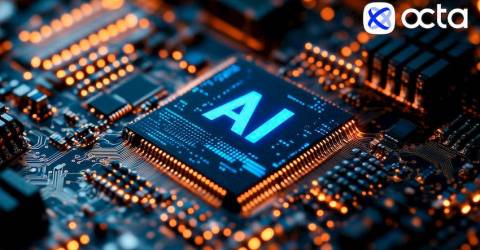KUALA LUMPUR, MALAYSIA – Media OutReach Newswire – November 29, 2024 – Artificial intelligence (AI) has become integrated into the financial sector, boasting one of the highest adoption rates among all sectors, according to Statist. Technology is transforming industry development, providing new business opportunities, new user experience and new risks. Despite undeniable benefits, traders display mixed feelings towards AI, grappling with its potential as well as its risks. Octa, a broker with globally recognized licenses, shares its perspective on how traders view AI, highlighting its benefits, challenges and potential to reshape retail trading.
The State of AI Adoption in Trading
The adoption of AI in trading is rather significant at the enterprise level. According to McKinsey’s 2024 State of AI Report, 50% of financial institutions have integrated AI into their trading workflows, citing efficiency and predictive capabilities as key benefits. However, individual traders remain cautious: surveys indicate that 38% of retail traders are hesitant to fully trust AI-based decisions, mainly due to the fear of losing control of critical business outcomes. As fear of the unknown and potential risks prevent traders from adopting technology, FOMO (fear of missing out) could inevitably increase, with AI expected to deliver an enhanced trading experience.
The Benefits of AI Adoption for Retail Marketers
As discussed in previous material, AI in Finance by Global Broker Octa: Transforming Investment Strategies for the Futurethe potential of AI to improve business processes has already begun to shape the industry. A recent JPMorgan study found that about 60% of their institutional trading activities now integrate AI-based tools to optimize market forecasts and improve trade execution. Additionally, the McKinsey 2023 State of AI Report highlights that adoption of AI in the financial services industry has increased by 35% over the past two years, driven by its ability to reduce processing times by up to 70% and improve predictive accuracy by 30%. %. For traders, these advances mean more efficient workflows and potentially more accurate decision-making.
Additionally, AI-based tools process huge data sets in real-time and uncover actionable insights without the need to spend hours manually monitoring the market. By automating routine tasks such as tracking price movements or analyzing charts for patterns, AI allows traders to focus on strategic decision-making. Additionally, AI-based tools like OctaVision aim to help traders improve their decision-making by offering personalized trading analysis and recommendations.
Barriers to trust in AI
Although AI’s capabilities are numerous and proven to improve efficiency, traders have significant reservations:
-> Loss of control: Many traders are wary of entrusting critical decisions to an automated system, fearing that AI may misinterpret complex market conditions.
–> Technical breakdowns: Some are concerned that the algorithms are properly trained and rely on a decent dataset to perform accurate analysis of real data.
-> Transparency challenges: The “black box” nature of some AI models makes it difficult for traders to fully understand how AI-based algorithms arrive at specific recommendations.
For example, AI models used in algorithmic trading often base their predictions on historical data, which does not always account for unprecedented market disruptions. Traders are therefore forced to manually validate AI-based recommendations, which adds an extra level of oversight and requires more time to make a final trading decision.
Given this, achieving the optimal balance between AI-driven insights and human touch is key to successful AI deployment for traders. To find the ideal match, they must learn about the mechanics of AI and its applications. To speed up the process, traders can study dedicated resources to understand how AI can be applied to retail trading and test ready-made scenarios in practice.
Balancing Trust and Innovation in AI-Driven Trading
Integrating AI into trading presents both opportunities and challenges for market participants. While the technology offers significant benefits, such as increased efficiency, rapid data analysis, and improved predictive capabilities, it raises legitimate concerns around trust, transparency, and the potential loss of human oversight.
The growing adoption of AI in financial markets, as evidenced by institutional practices and retail trading trends, indicates that traders are increasingly recognizing its value in navigating markets. However, a balanced approach is essential. By combining the strategic insights offered by AI with traditional analytical methods and personal judgment, traders can mitigate risks and exploit the full potential of this technology. The key lies in education, transparency and promoting a sense of control. Traders should adopt AI-powered tools to confidently improve their strategies while retaining the human touch that remains at the heart of financial decision-making.
Hashtag: #Octa
The issuer is solely responsible for the content of this announcement.

